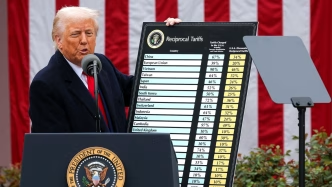The Trump administration’s trade war with China was launched under the promise of restoring American industry, closing trade deficits, and putting pressure on Beijing’s economic policies. However, as time passes, evidence suggests that the strategy may not be delivering the intended results — and could even backfire.
1. American Consumers Bear the Brunt
Contrary to the idea that tariffs would hurt China, studies show that American companies and consumers have absorbed most of the costs. Higher prices on goods — especially electronics, machinery, and everyday items — have become the norm, undermining the core goal of protecting the U.S. economy.
2. Supply Chain Shifts, But Not to America
Rather than returning manufacturing to the United States, companies have largely redirected their supply chains to other low-cost countries such as Vietnam, India, and Mexico. While this reduces dependence on China, it hasn’t created a manufacturing renaissance in the U.S. as promised.
3. Agriculture Hit Hard
U.S. farmers became collateral damage in the trade war, especially during the initial tit-for-tat tariffs. China, once one of the biggest buyers of American soybeans and pork, sharply reduced imports. Although some trade resumed, trust and long-term contracts were damaged.
4. China’s Global Strategy Remains Strong
While the trade war focused on bilateral pressure, China has expanded its global influence through Belt and Road initiatives and regional trade agreements such as RCEP. It is also deepening ties with the Middle East, Africa, and Latin America — a sign that the U.S. may be losing ground on the global stage.
5. Tech Decoupling Backfires
Trump’s tech crackdown, including actions against Huawei and TikTok, sought to curb China’s technological rise. But rather than cripple China’s tech sector, it has accelerated Beijing’s drive for self-reliance and spurred innovation in semiconductors, AI, and green tech.
6. No Major Concessions from Beijing
Despite multiple rounds of tariffs, China has not significantly changed its industrial subsidies, currency practices, or state-backed economic strategies. The core issues remain unresolved, showing the limited leverage gained through tariffs alone.
7. Alienating Allies
Rather than building a coalition to confront China’s practices, Trump’s approach isolated allies by imposing tariffs on Europe, Canada, and others. This fractured what could have been a united front and diluted global pressure on Beijing.
8. Short-Term Political Gain, Long-Term Uncertainty
While the trade war played well to a domestic audience eager for tough-on-China policies, it did little to craft a sustainable long-term economic strategy. The lack of a coherent vision for post-tariff relations with China leaves American industries uncertain.
9. Financial Markets Responded Poorly
Market volatility surged during the height of the trade tensions. Investors grew wary of unpredictability, with key indices swinging wildly due to tariff announcements. Such instability weakens confidence in both domestic and international markets.
10. China Isn’t the Only Game in Town — But Still a Big One
The U.S. cannot afford to ignore the fact that China remains the world’s second-largest economy and a major trading partner. A combative stance, without a clear strategy for coexistence and cooperation, risks long-term economic isolation.
Conclusion:
The Trump-era trade war may have been born from frustration with global trade imbalances, but its execution has proven clumsy and costly. As economic power continues to shift globally, a more strategic, multilateral, and forward-thinking approach is needed if the U.S. hopes to influence China’s trajectory — without undermining its own.
















